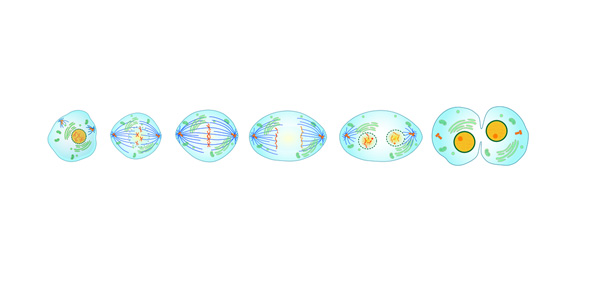Phases Of Mitosis Quiz Questions

This quiz was made to test your knowledge of the process of cell division. Mitosis is an essential process in every human and is fascinating to learn about. Please take my quiz and good luck!
Questions and Answers
- 1.
Interphase is technically not part of mitosis.
- A.
True
- B.
False
Correct Answer
A. TrueExplanation
Interphase is the phase of the cell cycle where the cell prepares for division by growing, replicating its DNA, and synthesizing proteins. It is not considered part of mitosis, which specifically refers to the division of the nucleus. Interphase occurs before mitosis and is necessary for the proper progression of the cell cycle. Therefore, the statement that interphase is not part of mitosis is true.Rate this question:
-
- 2.
The order in which the division process occurs is: Interphase, Prophase, Metaphase, Anaphase,Telophase and Cytokinesis.
- A.
True
- B.
False
Correct Answer
A. TrueExplanation
The given statement is true. The order in which the division process occurs is as follows: Interphase, Prophase, Metaphase, Anaphase, Telophase, and Cytokinesis. Interphase is the phase where the cell prepares for division, followed by Prophase where the chromosomes condense. During Metaphase, the chromosomes align in the middle of the cell, and in Anaphase, they separate and move towards opposite ends. Telophase is the phase where the nuclear envelope reforms, and finally, Cytokinesis occurs, dividing the cell into two daughter cells.Rate this question:
-
- 3.
When does the paired chromosomes separate at the kinetochores and move to opposite sides of the cell?
- A.
During Interphase
- B.
During Prophase
- C.
During Anaphase
- D.
During Telophase
Correct Answer
C. During AnaphaseExplanation
During Anaphase, the paired chromosomes separate at the kinetochores and move to opposite sides of the cell. This is a crucial stage of cell division where the microtubules attached to the kinetochores contract, pulling the sister chromatids apart. As a result, each chromatid is pulled towards the opposite poles of the cell, ensuring that each daughter cell receives a complete set of chromosomes. This process allows for the proper distribution of genetic material during cell division.Rate this question:
-
- 4.
In which stage does the nucleus disappear?
- A.
Interphase
- B.
Prophase
- C.
Anaphase
- D.
Cytokenisis
Correct Answer
B. ProphaseExplanation
During prophase, the first stage of mitosis, the nucleus disappears. This is because the nuclear envelope breaks down, allowing the genetic material within the nucleus to be accessible for further processes such as chromosome condensation and spindle formation. The disappearance of the nucleus marks the beginning of the process of cell division.Rate this question:
-
- 5.
The daughter cells are completely ______ to each other.
Correct Answer
IdenticalExplanation
The daughter cells are completely identical to each other means that they have the same genetic information and characteristics. This suggests that they were produced through a process of cell division, where the parent cell divides into two identical daughter cells. This ensures that the genetic material is equally distributed between the two cells, resulting in identical copies.Rate this question:
Quiz Review Timeline +
Our quizzes are rigorously reviewed, monitored and continuously updated by our expert board to maintain accuracy, relevance, and timeliness.
-
Current Version
-
Mar 21, 2023Quiz Edited by
ProProfs Editorial Team -
Nov 02, 2010Quiz Created by
Ninaadas
 Back to top
Back to top


